Whether you’re missing a tooth due to injury, decay or gum disease, a single-tooth implant is the closest replacement possible to your natural tooth. A single dental implant not only looks and functions just like your real tooth, but it’s also highly durable and long-lasting with the right care.
Table of Contents
What is a single tooth implant?
A single tooth implant comprises three main components:
- The dental implant
This part is embedded into the jaw and acts an artificial ‘tooth root’ - The abutment
This part connects the dental implant to the implant tooth - The dental crown or implant tooth
This is the visible artificial replacement ‘tooth’ part that fills the space left by the missing tooth
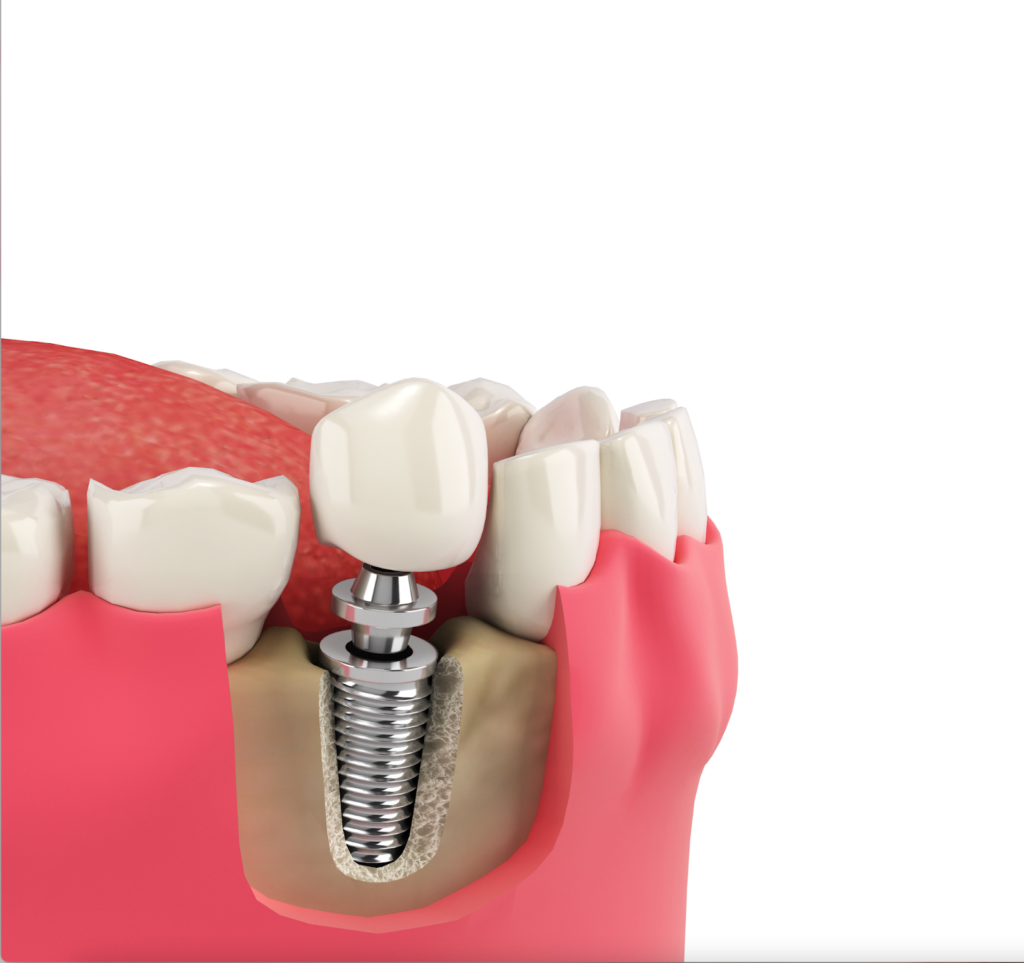
The dental implant attaches to the jaw bone and gum tissue in a process called osseointegration to become a secure anchor for the implant tooth.
Dental implants are typically made from high-grade medical titanium or other materials that fuse well with natural bone. This allows for a more successful osseointegration process.
A single-tooth implant offers a permanent solution for tooth loss as it remains fixed within the mouth and does not require any adhesives to stay in place.
What is the procedure for a single-tooth implant?
Single-tooth implants require a surgical procedure that is carried out by an experienced dental implant dentist. Treatment time for a single dental implant can take anywhere between 3 to 6 months, depending on your healing period.
The single-tooth implant procedure can be split into three stages: implant surgery, healing, and implant tooth attachment.
Implant surgery
During dental implant surgery, a titanium implant is inserted into the jaw bone to replace the lost tooth’s root. The implant dentist must carefully and precisely plan out the implant placement to ensure optimal function and avoid implant failure or future complications. Generally, patients will be under sedation during surgery to minimize any discomfort or anxiety.
If a patient has been missing their tooth for some time, they may have bone loss in their jaw. This can mean that there is not enough bone density to support the single-tooth implant. In these cases, bone grafting may be required prior to commencing, or during, treatment to replace the missing bone, stimulate new bone growth and give the implant a more sturdy foundation.
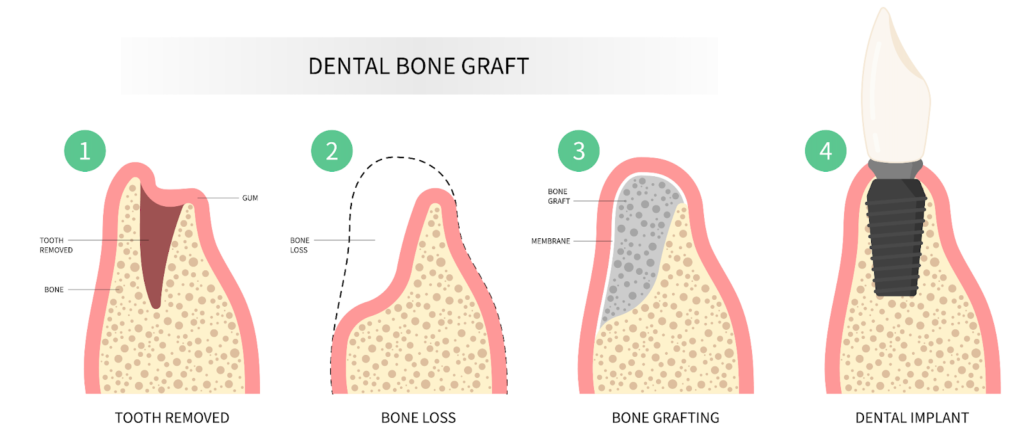
Once embedded in the jaw, the titanium implant is then capped with an abutment. If the single tooth implant is at the front of the mouth, a temporary tooth may be provided for the healing process.
Healing period
After implant surgery, the jaw bone and gums must heal around the titanium implant before the permanent implant tooth is attached. During this time, the osseointegration process occurs. This is where the implant fuses with the jaw bone to provide further support and strength for the implant tooth. This process usually takes around 3 to 6 months, however, healing time will vary from patient to patient.
Implant tooth attachment
Once the osseointegration process is complete and the jaw and gums are healed, the permanent implant tooth will be attached to the dental implant. For the best results, the implant tooth or dental crown will be carefully designed by a ceramist to perfectly match the size, shape and colour of your natural teeth.
The pros and cons of single tooth implants
H3: Pros of single tooth implants
- Look, feel and function like a natural tooth
- Extremely secure and durable
- Permanent tooth replacement solution
- Help to prevent jaw bone loss
- Does not affect neighbouring teeth
- Easy to keep clean
Cons of single-tooth implants
- Requires surgery
- Healing time can take up to 6 months
- Requires strong bone density (or bone grafting will be required)
- More expensive than interim or removable tooth replacement options
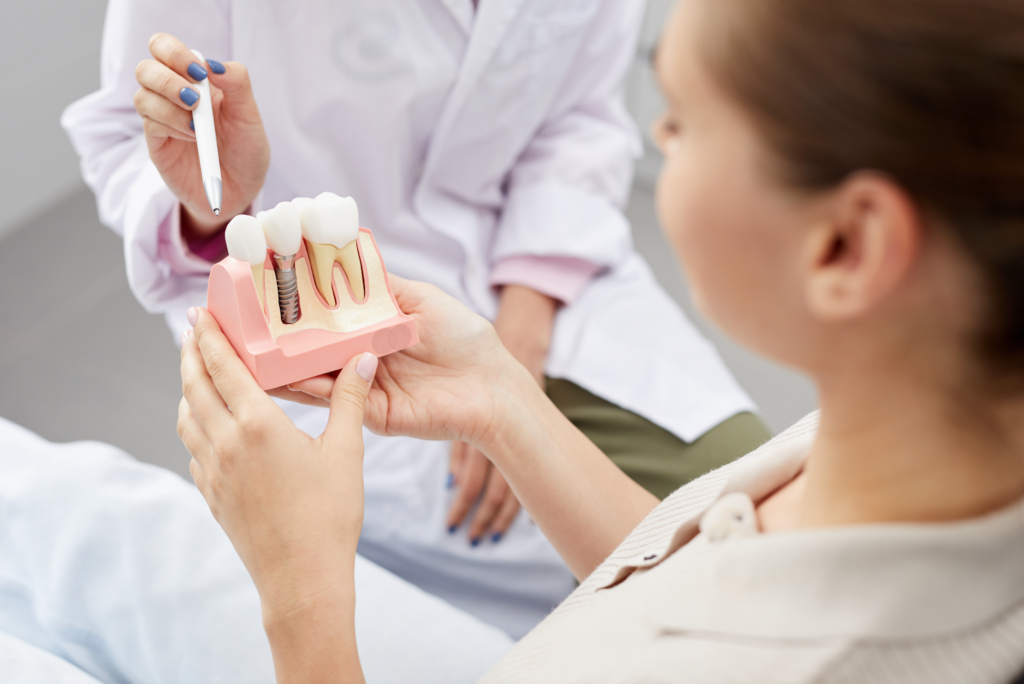
What are the alternative options for single tooth replacement?
Partial denture
A partial denture may offer a more affordable, short-term solution to restore your smile. With a partial denture, the false tooth is fitted to a plastic gum-coloured base that is custom-moulded to your mouth. This base helps to keep the denture in place but some may also require adhesive.
Pros of partial dentures
- Affordable
- No surgery required (unless existing tooth must be removed)
Cons of partial dentures
- Can be loose and uncomfortable, especially when speaking or eating
- Not a long-term solution (dentures must be replaced every 5-10 years)
- Must be removed during sleep and for cleaning
- Does not look as natural as implants
- Does not prevent jaw bone loss
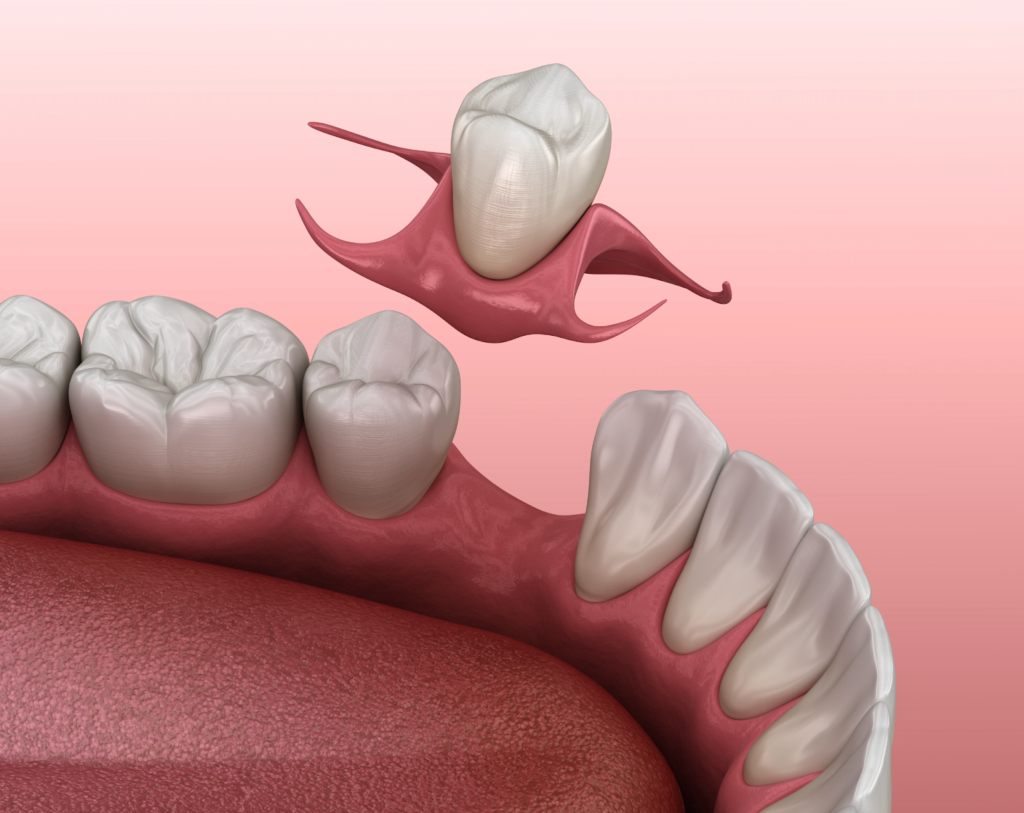
Tooth-supported bridge
A tooth-supported bridge is secured in place using the neighbouring teeth on either side of the lost tooth. The supporting teeth are capped with dental crowns that connect the dental bridge together.
Pros of tooth-support bridge
- No surgery required
- Looks and functions like natural teeth
- Less expensive than single tooth implant
Cons of tooth-supported bridge
- Can damage supporting healthy teeth
- Neighbouring teeth may need to be filed down to fit tooth bridge
- Does not prevent jaw bone loss
- Cleaning can be difficult and food particles may get stuck under tooth bridge
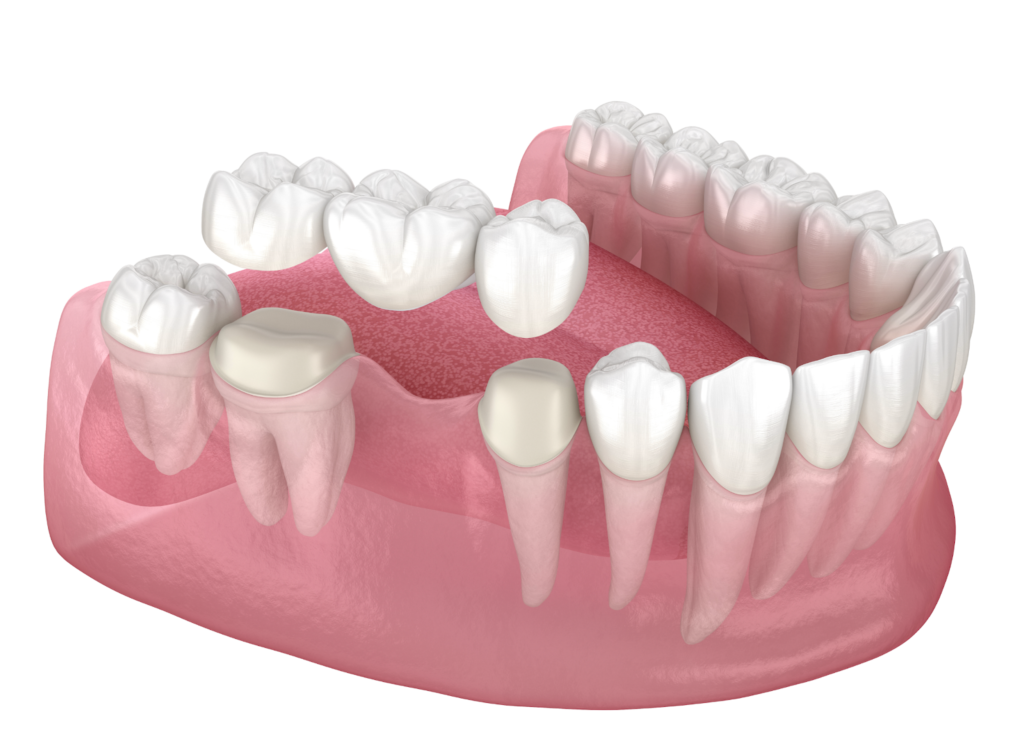
What happens if I don’t replace a missing tooth?
Tooth loss not only affects the appearance of your smile, it can have a detrimental impact on everything from the function of your jaw to your emotional wellbeing.
If you do not replace a missing tooth, you may be left facing some adverse implications, such as:
- Issues with speaking, eating and chewing
- Unbalanced or misaligned biting pressure
- Displacement of neighbouring teeth
- Jaw bone loss
- Changes to your jaw muscles and facial structure
- Increased risk of oral health issues
- Experiencing negative emotions, such as shame, embarrasment and low self-esteem
Your teeth are designed to work together. While losing a single tooth may not seem so dire for some (especially if it’s at the back of your mouth), it can lead to more serious complications in future. This is why it’s so important to replace your missing tooth with a proven and effective tooth replacement option like a single tooth implant.
Author:
DR DANIEL ADAMO
Dentist
BDS Dip.Clin Dent (Oral Implants)
Dental Implants on Miller
102/506 Miller Street, Cammeray NSW 2062, Australia

Bio:
Over the past 25 years, Dr Daniel Adamo has restored thousands of smiles with dental implants and All-on-4. His luxury dental practice, Dental Implants on Miller, in Cammeray, Sydney is recognised as one of a limited number of All-on-4 Centres of Excellence by Nobel Biocare. This attests to Dr Adamo’s surgical experience and training, as well as the quality of the implants he uses.
As one of Sydney’s most experienced All-on-4 dental Implants dentists, Daniel has seen first-hand how life-changing dental implant treatments can be. Helping his patients get both their smile and their life back is his greatest reward.
